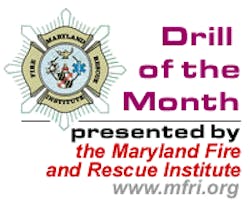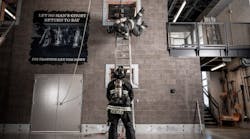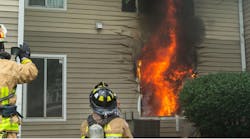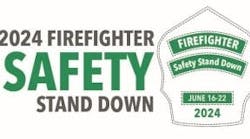Course: Tanker operations in water supply
Session Reference: 1-1
Time Required: 3 Hours
Materials Required: Engines, tankers, various water sources, portable water tanks,
Motivation:
It is important for companies able to obtain water from sources other than hydrants at the fireground, and operate a tanker shuttle to provide adequate water supply for firefighting operations. This skill is not limited to rural applications, and may be necessary to supplement hydranted areas where there is inadequate water supply.
Objective (SPO): 1-1
Given information from discussions, handouts, and reading materials demonstrate the operation of rural tanker water supply operation according to the standards of the authority having jurisdiction.
Overview:
Tanker operations in rural water supply
1. Selecting Water Sources
2. Tanker Features
3. Selecting Tanker Travel Routes
4. Tanker Fill and Dump Station operation
5. Calculating and Meeting Water Flow Requirements
6. Increasing Water Amounts
Enabling Objectives: 1-1
1-1-1
Choose the best water source available to support a fireground operation.
1-1-2
Identify the features of a tanker that aid in delivering water to the fireground.
1-1-3
Select a route of travel for tankers involved in the shuttle operations.
1-1-4
Setup and operate a tanker fill station and dump station.
1-1-5
Determine the water flow that can be sustained on the fireground while the tanker shuttle is operational.
1-1-6
Make recommendations for increasing the amount of water available at the fireground if necessary.
1-1-7
Demonstrate tanker operation in practical evolutions
Note: areas used for practical drill will likely have to be established prior to class start by
instructors/officers. Have students share knowledge on these selections as the class progresses,
for improvements
I. Selecting Water Sources
A. Types of water sources
1. Hydrants
2. Ponds/lakes
3. Streams
4. Rivers
5. Swimming Pools
6. Others
B. Items to consider when selecting a water supply source
1. Accessibility of the source
a. Accessible all year?
b. Water always available (does stream dry up in summer?)
2. Distance from the fire
3. Route of travel
4. Time required to travel route
5. Easy access for multiple tankers
II. Tanker Features
A. Tank size
1. Large volume tank
2. Minimum tank size established by local AHJ.
3. Easy to fill quickly
a. Direct fill to tank
b. Tank properly vented
B. Methods for offloading water
1. Direct to tank gravity dumps
2. Jet dumps
3. Pump off
C. Other equipment
1. Drafting sleeves
2. Portable dump tank(s)
3. Portable pump capable of drafting
III Tanker Travel Routes
A. Distance to water source
B. Road type/conditions
C. Can route be established so tankers do not pass each other? (circular route)
D. Intersections
E. Traffic volume on roads
F. Obstructions (restricted bridges, low clearances, etc)
G. Time required to complete full route
H. Weather
IV. Tanker Fill and Dump Station Operations
A. Tanker fill site
1. General considerations
a. Easily accessible by all tankers
b. Large enough to support operation
c. Safe from other traffic
d. Reasonable distance from fireground/dump site
2. Operations
a. Allow room for draft pumper if necessary
b. Establish multiple lines to fill tankers
c. Fill only one tanker at a time
d. Have adequate personnel available to safely manage fill site responsibilities
1. Pump operator
2. Hose handlers
3. Traffic control
B. Tanker dump site
1. General considerations
a. Easily accessible by all tankers
b. Large enough to support operation
c. Safe from other traffic
d. Does not block access to fireground for other apparatus
C. Operations
1. Allow room for fireground supply pumper
2. Allow room to store water on the scene
3. Portable tanks as necessary
4. Nurse tankers
a. Position dump tanks so they are accessible to tankers
a) Use more than one portable tank if necessary
b) Use appropriate water transfer devices to move stored water between portable tanks.
b. Have adequate personnel available to safely manage dump site responsibilities
a) Traffic control
b) Hose handlers/firefighters
V. Operation of a water tanker shuttle
A. Water supply officer
a. Directs all water supply operation as part of incident command system
b. Requests additional resources as required
B. Establish a fill site, dump site, and a travel route for tankers shuttling water.
C. Maintain orderly flow of vehicle traffic on route.
a. Avoid having tankers parked at dump site blocking access to fireground
b. Establish staging area for filled tankers if necessary
VI. Increasing Water Amounts
A. Add additional tankers into shuttle
a. Long travel route
b. Tankers unable to maintain supply because of route or distance
B. Establish multiple tanker fill stations
a. Used if problem can be identified as bottleneck at fill site
b. Having a multiple fill provides backup if problem occurs at one site.
C. Establish multiple tanker dump stations at fireground
a. Used if problem can be identified as bottleneck at dump site
b. May be necessary if water supply is required in areas of the fireground where laying supply lines
is not practical.
D. Establish multiple complete shuttle operations.
a. Desirable if fireground operation is very large and requires large volume of water
b. All water supply operations should be coordinated through incident command
VII. Practical evolutions
A. Students shall select a site to simulate a fireground, and establish the amount of water flow desired
B. Students shall establish a tanker shuttle operation capable of supplying the water flow required at the fireground using resources available within the jurisdiction
C. Students shall identify ways to increase the amount of water available at the drill site, using resources available within the jurisdiction.
D. Cleanup
E. Critique
SUMMARY
REVIEW
Tanker operations in rural water supply
• Selecting water sources
• Tanker features
• Selecting a route of travel for tankers
• Operation of tanker fill and dump stations
• Calculating water flow requirements and how to meet them
• Ways to increase amount of water available at the fireground
REMOTIVATION
It is important for companies to be able to obtain water from sources other than hydrants at the fireground. Insuring an adequate water supply is one of the most vital steps in insuring a successful fireground operation.






